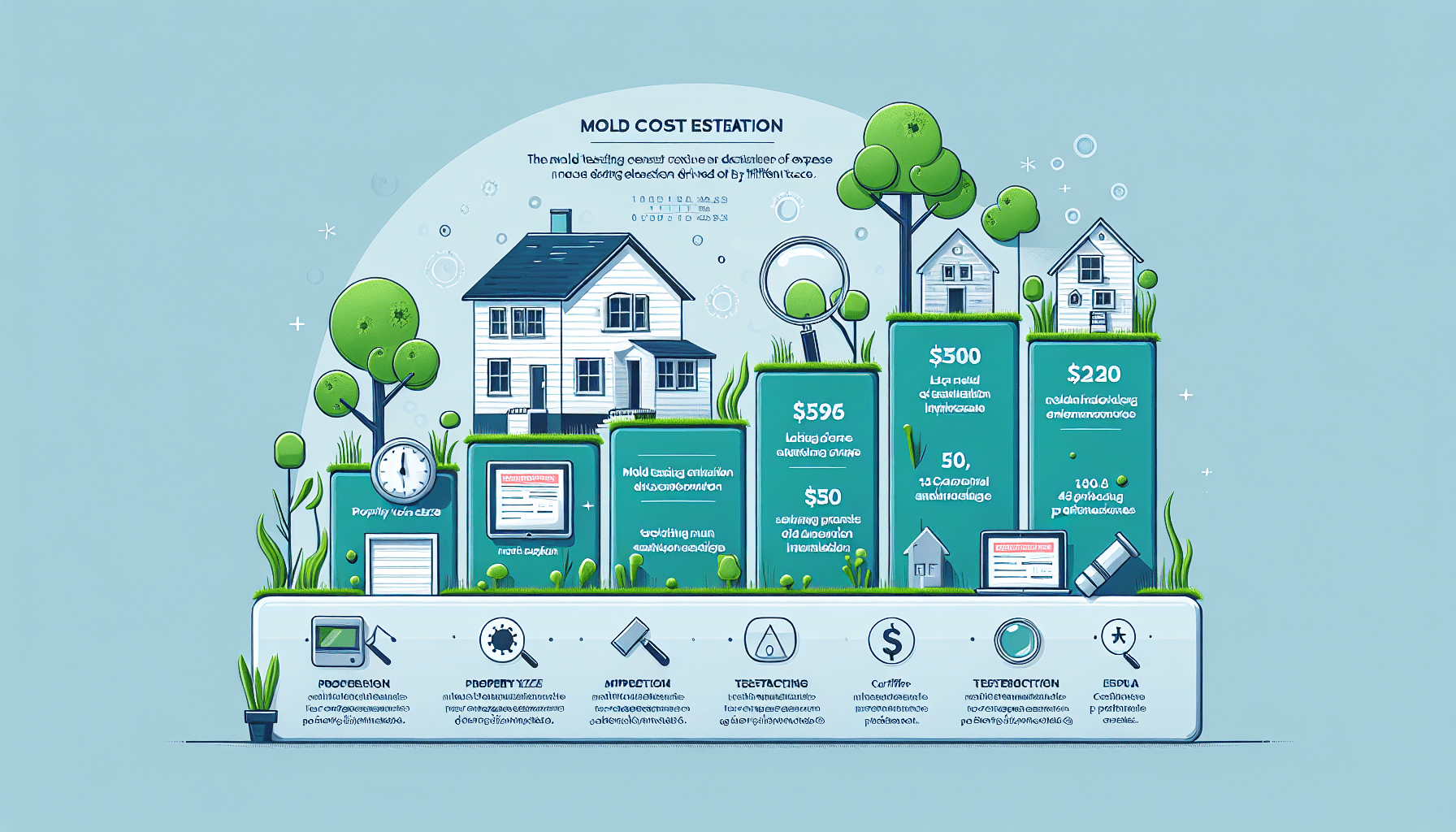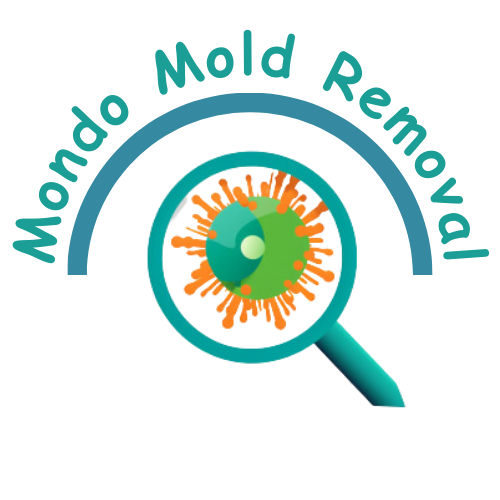So, you’ve discovered some potential mold issues in your home and now you’re wondering about the cost of mold testing. Don’t worry, we’ve got you covered! In this article, we’ll guide you through the process of determining the cost of mold testing for your home. We’ll explore the factors that influence the price, ranging from the size of your property to the type of testing you require. By the end, you’ll have a clear understanding of what to expect and be able to make informed decisions regarding mold testing for your cherished space.
Factors Affecting the Cost of Mold Testing
Mold testing is an important step in ensuring the safety and healthiness of your home. However, it is important to understand that the cost of mold testing can vary based on several factors. These factors include the size of the property, the extent of mold growth, the number of samples taken, the type of mold testing method used, and the location of the property. Let’s delve into each of these factors to give you a better understanding of how they can impact the cost of mold testing.
Size of the Property
The size of your property is one of the main factors that can affect the cost of mold testing. Generally, larger properties require more time and resources to thoroughly test for mold. This is because professionals will need to cover more ground to determine if there is any mold growth present. As a result, the cost of mold testing for a larger property will be higher compared to a smaller one. It’s important to consider the size of your property when budgeting for mold testing.
Extent of Mold Growth
The extent of mold growth in your home can also influence the cost of mold testing. If you suspect or visually observe widespread mold growth in multiple areas of your property, professionals may need to take more samples and conduct more extensive testing to accurately assess the situation. This additional effort and resources required to address a significant mold problem will inevitably increase the cost of mold testing. It’s crucial to be aware of the extent of mold growth in your home to determine the appropriate level of testing needed.
Number of Samples
The number of samples needed for mold testing can impact the overall cost. Mold testing typically involves collecting samples from different areas of your property to determine the presence and concentration of mold spores. The more samples that need to be collected, the more time and resources it will require. Therefore, if you have a larger property or suspect mold growth in multiple areas, the number of samples needed will increase, resulting in higher testing costs. It’s important to discuss the recommended number of samples with a professional to ensure accurate testing.
Type of Mold Testing
There are different methods of mold testing, and the method you choose can affect the cost. The three main types of mold testing are air testing, surface testing, and bulk testing.
Air Testing
Air testing involves collecting air samples to measure the concentration of mold spores in the indoor environment. It is the most common and cost-effective method of mold testing. Professional assessors use specialized equipment to capture and analyze the air samples.
Surface Testing
Surface testing is used to determine the presence of mold on surfaces such as walls, floors, or furniture. It involves swabbing or tape-lifting samples from the suspected areas and sending them to a laboratory for analysis. Surface testing can be more expensive than air testing, as it requires additional labor and analysis of individual samples.
Bulk Testing
Bulk testing involves taking physical samples of materials suspected to contain mold, such as a piece of drywall or insulation. These samples are then sent to a laboratory for analysis to identify the type and concentration of mold present. Bulk testing is typically the most expensive method, as it requires the removal of materials for testing.
The type of mold testing method you choose will ultimately affect the cost. It’s important to consult with a professional to determine which method is most appropriate for your situation and budget.
Location of the Property
The location of your property can also impact the cost of mold testing. Prices can vary depending on the region and local demand for mold testing services. In some areas, where mold-related issues are more prevalent, the cost of testing may be higher. Additionally, if your property is located in a remote or hard-to-reach area, professionals may charge additional fees for travel expenses. It’s important to consider the location of your property when evaluating the cost of mold testing.
Methods of Mold Testing
Now that we have explored the factors that influence the cost of mold testing, let’s take a closer look at the different methods of mold testing.
Air Testing
Air testing is the most common method used to assess the presence of mold in the indoor air. It involves the collection of air samples from different areas of your property. These samples are then analyzed in a laboratory to identify and quantify the types and concentrations of mold spores present. Air testing provides valuable information about the overall air quality in your home and helps to identify any indoor mold contamination.
Surface Testing
Surface testing is another method used to detect mold in your home. It involves collecting samples from surfaces, such as walls, floors, or furniture, that may be contaminated with mold. The samples are then sent to a laboratory for analysis. Surface testing is useful for identifying and confirming mold growth on specific surfaces and can help determine the extent of contamination.
Bulk Testing
Bulk testing involves collecting physical samples of materials, such as drywall or insulation, that may be suspected to contain mold. These samples are taken back to a laboratory for analysis, where they are examined under a microscope to identify and quantify the presence of mold. Bulk testing is typically used when there is visible mold growth or when the source of mold is suspected to be within the material itself.
Each method of mold testing has its own advantages and limitations, and the choice of method will depend on your specific situation and budget. Consulting with a professional mold testing company will help you determine which testing method is most appropriate for your needs.

Cost Range for Mold Testing
Mold testing costs can vary significantly depending on several factors, as we discussed earlier. However, it can be helpful to have a general idea of the cost range to better understand what you can expect to pay for mold testing services. Let’s explore the average costs, low-end costs, and high-end costs associated with mold testing.
Average Costs
On average, mold testing can range from $300 to $600. This range typically includes the cost of collecting and analyzing samples, as well as the generation of a detailed mold testing report. Keep in mind that this is just an average estimate, and prices can vary depending on the factors we discussed earlier. It’s important to obtain detailed quotes from different mold testing companies to get a more accurate idea of the cost for your specific situation.
Low-End Costs
At the lower end of the price range, you may find mold testing services starting from around $200. These lower-cost services may include basic air testing to assess the overall air quality in your home. If you have a smaller property and suspect minimal mold growth, opting for a low-end mold testing service may be a more cost-effective option.
High-End Costs
On the high end of the price range, mold testing costs can exceed $1000, especially when extensive testing is required, or if additional services such as remediation or removal are necessary. These higher costs may be associated with larger properties, significant mold growth, or the need for specialized testing methods. It’s essential to carefully assess your specific situation and work with a professional to determine the appropriate level of testing needed.
Remember that these cost ranges are just general estimates, and the final cost will depend on various factors. Obtaining multiple quotes from reputable mold testing companies will give you a better understanding of the specific costs for your home.
Additional Costs
While the cost of mold testing itself is an important consideration, it’s crucial to be aware of any additional costs that may be associated with the testing process. Let’s explore some of the common additional costs you may encounter when undergoing mold testing.
Consultation Fees
Some mold testing companies may charge consultation fees to assess your property and discuss the testing options with you. These fees can vary depending on the company and the extent of the consultation. It’s important to clarify whether there are any consultation fees and factor them into your overall budget for mold testing.
Testing Report Fees
Once the mold testing is complete, you will receive a detailed report outlining the results. Some companies may charge additional fees for the generation and delivery of this report. It’s essential to inquire about any testing report fees upfront to avoid any surprises when you receive the final invoice.
Remediation or Removal Costs
If mold is detected during the testing process, remediation or removal may be necessary to address the issue. These additional services can incur separate costs, depending on the extent of the mold problem and the type of remediation or removal required. It’s important to understand that mold testing costs may not include remediation or removal expenses, so it’s crucial to budget accordingly if these services are needed.
Considering these additional costs will help you plan your budget effectively and avoid any unexpected expenses.

DIY vs. Professional Mold Testing
When it comes to mold testing, you may be wondering whether you should undertake the testing yourself or hire a professional. Let’s weigh the pros and cons of each approach to help you make an informed decision.
Pros of DIY Testing
One of the main advantages of DIY mold testing is cost savings. DIY testing kits are readily available and typically less expensive compared to hiring a professional. Additionally, DIY testing allows you to collect samples at your own convenience. This option may be suitable if you have a smaller property and suspect minimal mold growth.
Cons of DIY Testing
DIY testing has some limitations that you should consider. Firstly, the accuracy of DIY testing kits can vary, as they may not provide the same level of precision as professional testing equipment. Secondly, if you are not familiar with mold testing procedures, you may not collect samples correctly, which could lead to inaccurate results. Finally, DIY testing may not provide you with a comprehensive analysis of the mold problem, as professional assessors can evaluate the overall impact and potential causes of mold growth.
Pros of Professional Testing
Hiring a professional mold testing company has several advantages. Firstly, professionals have the knowledge, experience, and specialized equipment to accurately assess your property for mold growth. They can identify the type and concentration of mold spores present, providing you with a detailed analysis. Secondly, professional testing can help uncover the root cause of mold growth, allowing for targeted remediation efforts. Finally, professional testing can provide you with peace of mind, knowing that your home has been thoroughly assessed by experts.
Cons of Professional Testing
The main drawback of professional mold testing is the cost. Hiring a professional can be more expensive compared to DIY testing kits. Additionally, scheduling the testing and waiting for the results may introduce some time delays. However, the benefits of professional testing often outweigh the associated costs.
Hiring a Professional Mold Testing Company
If you decide to hire a professional mold testing company, there are several considerations to keep in mind. Let’s go through some essential steps to help you find a reputable company and ensure a smooth testing process.
Finding Reputable Companies
Start by researching and identifying reputable mold testing companies in your area. Look for companies with positive reviews, certifications, and experience in mold testing. Online directories, recommendations from friends or family, or consultations with local health departments can be valuable resources in finding reputable companies. It’s important to choose a company that has a good reputation and a track record of providing quality services.
Obtaining Multiple Quotes
To compare costs and services, obtain multiple quotes from different mold testing companies. Provide them with detailed information about your property, including size, suspected areas of mold growth, and any other relevant details. This will help ensure that the quotes you receive are accurate and tailored to your specific needs. Carefully review and compare the quotes to make an informed decision.
Verifying Licenses and Certifications
When hiring a professional mold testing company, it’s crucial to verify their licenses and certifications. Check if the company holds appropriate licenses required by your state or region. Additionally, inquire about any certifications or accreditations that demonstrate the company’s expertise and adherence to industry standards. A reputable company will be transparent and readily provide this information upon request.
Checking for Insurance Coverage
Before finalizing your decision, inquire about the company’s insurance coverage. Mold testing involves potential risks, and it’s important to ensure that the company has adequate liability insurance to protect you and your property in case of any unforeseen incidents. Request proof of insurance and review the coverage provided.
Taking these steps will help you select a professional mold testing company that meets your needs and provides reliable results.
Tips for Reducing Mold Testing Costs
While mold testing is an essential investment in your home’s health and safety, there are ways to reduce the overall testing costs. Consider these practical tips to help manage your expenses.
Preventative Measures
Taking preventive measures to minimize the risk of mold growth can help reduce the need for extensive testing and potential remediation costs. Proper ventilation, controlling moisture levels, and promptly addressing any water damage or leaks can help prevent the conditions conducive to mold growth. By proactively maintaining a dry and well-ventilated environment, you can potentially reduce the extent and frequency of mold testing required.
Comparison Shopping
Just as you would for any significant purchase or service, comparison shopping is crucial when it comes to mold testing. Obtaining multiple quotes from different mold testing companies will allow you to compare costs and services. It’s important to ensure that the quotes are detailed and cover all aspects of the testing process. By comparing prices, you can identify options that suit your budget without compromising on the quality of services provided.
Bundle Services
If you are considering additional services, such as mold remediation or removal, bundling these services with mold testing can potentially lead to cost savings. Some mold testing companies also offer remediation services, and bundling these services together may result in a package deal or a discounted rate. Inquire about any bundled service options to potentially reduce your overall expenses.
Negotiating Prices
Don’t be afraid to negotiate prices with mold testing companies. While some companies may have set rates, others may be willing to negotiate depending on factors such as the size of your property or the extent of testing required. It’s always worth asking if there is any room for negotiation, especially if you are on a tight budget. The worst-case scenario is that they decline your request, but it’s worth trying to save some money when possible.
Final Thoughts
When it comes to mold testing, it’s essential to consider the factors that affect the cost, the different testing methods available, and the additional costs that may arise. While DIY testing may offer cost savings, it’s important to recognize the limitations and potential inaccuracies of this approach. Hiring a professional mold testing company can provide accurate results and help uncover the underlying causes of mold growth. By following the steps we outlined for hiring a professional company and considering cost-reducing tips, you can ensure a thorough and affordable mold testing process. Remember, investing in mold testing is an investment in the health and safety of your home and your loved ones.






